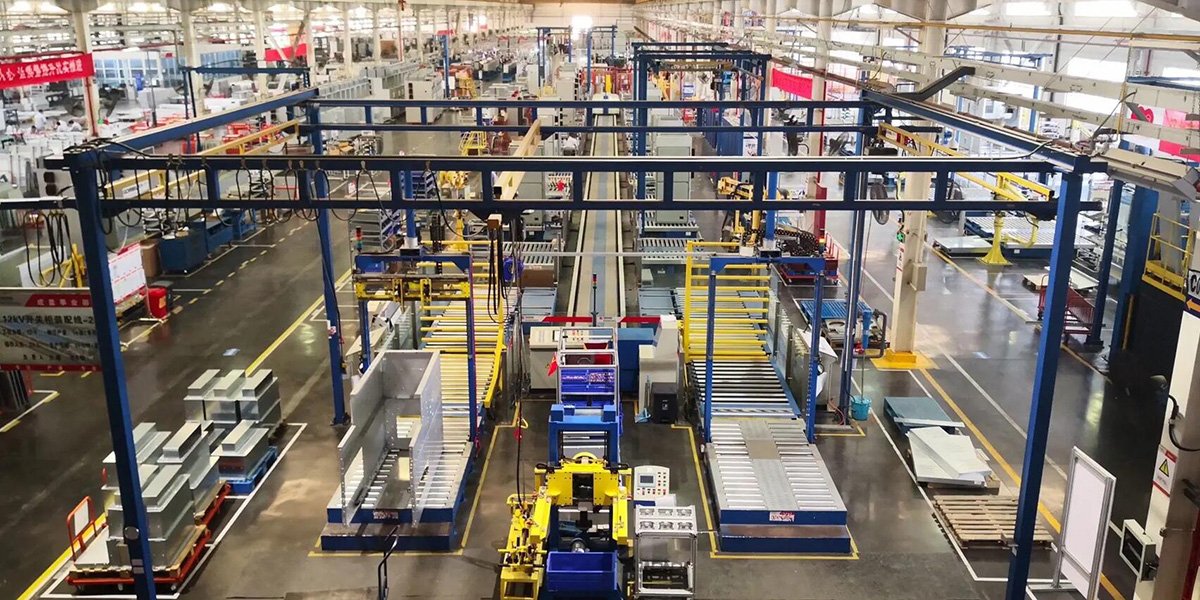Which switchgears are suitable for mass production on assembly lines?

Adopting mass production of switchgear on assembly lines can significantly enhance production efficiency and reduce costs. Standardized operations on assembly lines ensure the stability and consistency of product quality, minimizing the defect rate caused by human factors. Moreover, mass production optimizes the procurement and management of raw materials, further lowering costs. This production mode also facilitates management and monitoring, enabling faster response to market demands and shorter delivery times. It not only boosts a company’s production capacity and market competitiveness but also better meets customer requirements for product quality and delivery time, driving sustainable development.
Below is a summarized table of switchgear types, categorized by different criteria:
| Classification Basis | Type | Characteristics | Applications |
|---|---|---|---|
| Voltage Level | Low-Voltage Switchgear | Voltage up to AC 1000V, simple structure, lower cost. | Suitable for residential, commercial buildings, and industrial low-voltage distribution systems. |
| Medium-Voltage Switchgear | Voltage typically around AC 10kV. | Suitable for medium-voltage distribution networks, such as urban power grids. | |
| High-Voltage Switchgear | Voltage above AC 1000V, high safety and protection levels. | Suitable for high-voltage transmission, substations, and industrial high-voltage distribution. | |
| Internal Structure | Open-Type Switchgear | No enclosed shell, components exposed. | Suitable for applications with low protection requirements. |
| Metal-Enclosed Switchgear | Components enclosed in a metal shell, high protection level. | Suitable for general industrial and commercial distribution systems. | |
| Metal-Clad Switchgear | High mechanical strength and protection level. | Suitable for high-demand distribution systems. | |
| Application | Infeed Cabinet | Receives electrical energy and introduces it to the busbar system, equipped with circuit breakers, CTs, and PTs. | Used at grid connection points. |
| Outfeed Cabinet | Distributes electrical energy, equipped with circuit breakers, CTs, and PTs. | Used for distributing electrical energy to various loads. | |
| Bus Coupler Cabinet | Connects two busbars for switching operating modes. | Used for busbar connection and load distribution. | |
| PT Cabinet | Equipped with voltage transformers for voltage monitoring and protection. | Used for voltage monitoring and protection. | |
| Isolation Cabinet | Provides isolation for maintenance and inspection. | Used for equipment isolation and maintenance. | |
| Capacitor Cabinet | Used for reactive power compensation to improve power factor. | Used for compensating reactive power in the grid. | |
| Installation Method | Fixed-Type Switchgear | Simple structure, low cost, but poor expandability. | Suitable for simple wiring and easy maintenance applications. |
| Drawer-Type Switchgear | Modular design, easy maintenance, high flexibility. | Suitable for applications requiring frequent maintenance and quick repairs. | |
| Protection Level | Fixed-Panel Switchgear | Lower protection level. | Suitable for environments with low protection requirements. |
| Protective Switchgear | Higher protection level. | Suitable for environments with high protection requirements. |

The advantages of using assembly-line manufacturing for switchgear can be summarized as follows:
- Increased Production Efficiency
Assembly-line production achieves automation and standardization, with clear division of labor and unified production rhythms. This significantly shortens production cycles and greatly improves overall production efficiency. - Ensured Quality Stability
Strict quality control and standardized processes ensure the consistency and reliability of switchgear quality, reducing the defect rate caused by human factors and enhancing product safety. - Reduced Production Costs
Centralized management and optimized resource allocation minimize material waste and equipment idleness. Standardized production also lowers labor and management costs, improving the enterprise’s economic benefits. - Enhanced Market Competitiveness
Assembly-line production enables rapid response to market demands, supports large-scale manufacturing, and shortens product delivery times, thereby strengthening the company’s competitiveness in the market. - Ease of Maintenance and Upgrades
Standardized production processes make switchgear components more interchangeable and universal, facilitating subsequent maintenance and upgrades and reducing after-sales costs. - Support for Large-Scale Development
Assembly-line manufacturing lays the foundation for large-scale production, helping enterprises expand their capacity to meet the substantial market demand for switchgear and drive sustainable business growth.
